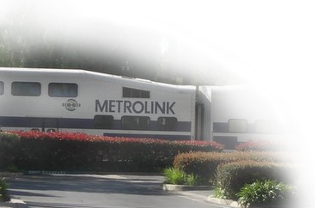Comparison of the Claremont and La Verne Water Systems
What makes the Claremont system unique?
The Claremont system is an older system than most neighboring communities, having been established in 1928. It is about the same age as the La Verne system. The City of La Verne (Lordsburg) was initially supplied water by the Mills Tract Water Company, a local irrigator. The supply was sufficient, but water pressure was sorely lacking, leaving many residents without water during evening irrigation. The City of La Verne purchased the Mills Tract Water Company’s distribution system in 1914 and the City’s municipal system was born. GSWC must be prepared to supply water based upon peak resident demand at any time. The many Claremont Colleges are not in session during summer months when demand is highest. That would lessen Claremont’s need for peak demand compared to La Verne. We design our systems to meet peak day demands as well as anticipated fire flow conditions. Our peak day demand is about 44.2 acre feet (2010), average day demand is about 23.7 acre feet (2010). GSWC must purchase and import approximately 36 percent of water for (Claremont) resident consumption. La Verne must purchase and import much more; 66% in 2010. It costs more per unit to supply water to La Verne.
Revenue Sources
A significant difference between private and municipal water purveyor rates is that municipal providers can offset their expenses by supplementing income from other revenue streams. In Region III, many public providers use property taxes and service fees to supplement their revenue. Public providers use a service fee structure that charges customers anytime a service is required to their home. La Verne does not use property taxes, service fees, or other means to help pay for their water system. There are no surcharges such as are added to GSW usage rates. La Verne DOES charge various fees for new connections to the city’s water system. These are generally one time fees collected at time of hook up. A typical 10,000 square foot, residential lot would pay about $4,250 to receive water. The City of La Verne’s rates are based on the location of the customer’s home. This rate model charges customers at higher elevations more than customers at lower elevations. In Claremont the tiered rates do not take into account this cost-to-supply, but are in effect at all times for everyone.
La Verne does haves an additional tiered rate system, based on usage, that applies only in times of drought.
We recently raised our rates $0.31 per unit (about 11.5% for the lower zones and 9.4% for the upper zones). La Verne’s current unit (1,000 gallons) rates by zone are:
Zone 1 $3.00
Zone 2 $3.10
Zone 3 $3.29
Zone 4 $3.50
Zone 5 $3.61 The water from La Verne ranges from $0.00269/gal to $0.00354/gal as compared to GSWC tiered water rate of $0.00417/gal, $0.00497/gal, and $0.0056/gal respectively for tiers I, II, and II. As indicated, the highest rate in La Verne is lower than the lowest rate in Claremont… Since 2002, La Verne customers use approximately 2,700 af per year less than Claremont, or 2.7 million gallons less per day 10. This is important because of the California Department of Public Health design requirements for public water systems as it relates to meeting customer demands. To meet the Claremont customer’s demand and CDPH requirements, Claremont requires a different infrastructure. I can’t confirm this statement. This is 34% more usage than in Claremont, but the per-capita use of potable water is only 15% higher in Claremont.
Since the systems are largely built out would Claremont require a different infrastructure than it has now?
(Based on Claremont FAQs posted on the site gsw.com)




